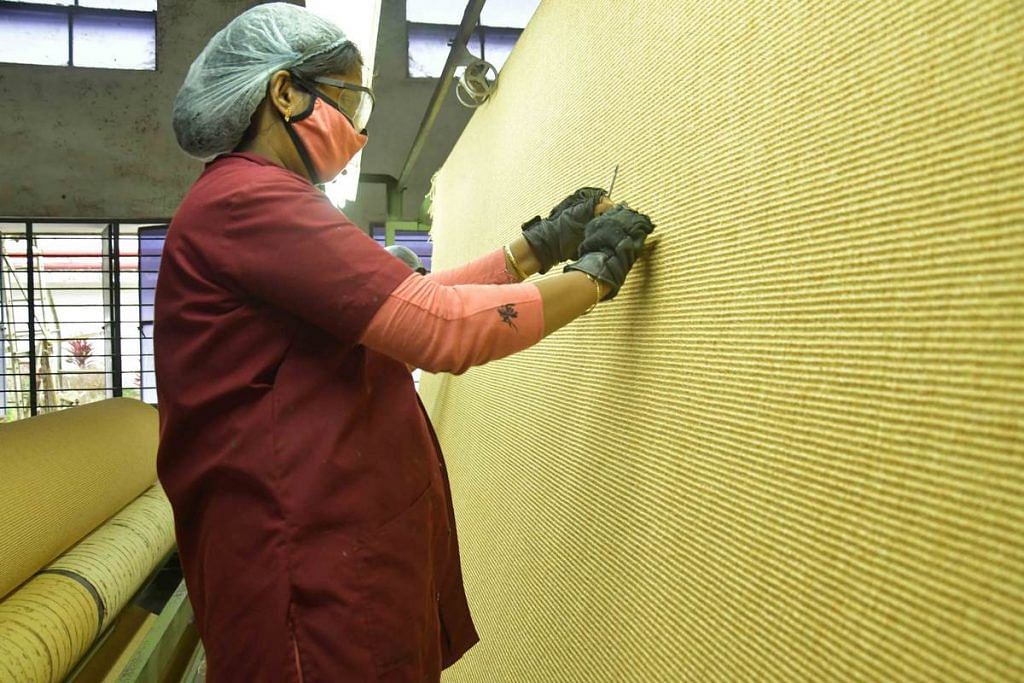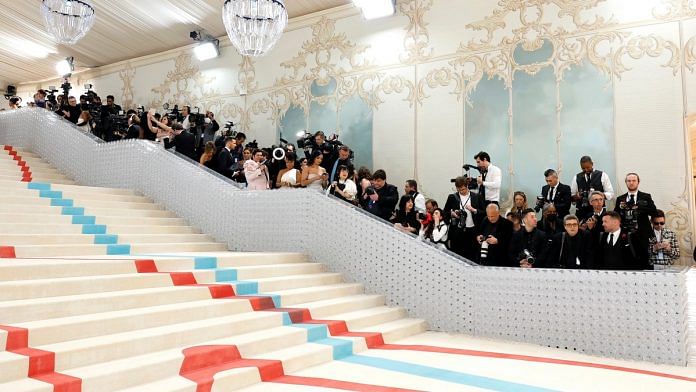New Delhi: From Jennifer Lopez to Alia Bhatt, a sweeping off-white creation with bold swirls of blue and red featured in pretty much every frame of celebrities flaunting their fashion at New York’s Met Gala this Monday. This was the extravaganza’s much-vaunted ‘red carpet’ and it came straight from Cherthala, a small town in Kerala.
Woven using natural fibres, the distinctive carpet, covering nearly 7,000 square metres, was made by a local company called Neytt by Extraweave, run by the third generation of a family that has been manufacturing floor coverings in Kerala for over a hundred years.
Speaking to ThePrint, Sivan Santhosh, executive director of Neytt, said that the company had woven the carpet for Met Gala 2022 too, but this time around, they decided to publicise their contribution.
“We are proud of the fact that it is manufactured in Cherthala and that our indigenous and sustainable practices are now being showcased globally,” he added. “It is a matter of pride for Kerala and India.”
The Met Gala carpet, he said, was woven using sisal fibres, something that the family has been working with “for the past 23 years”.
Sivan comes from an illustrious lineage of carpet manufacturers. His grandfather founded the Travancore Mats and Matting Company in 1917, while his father Santhosh set up another brand called Extraweave. A few years ago, Sivan and his wife Nimisha set up Neytt by Extraweave with the aim of creating “high-fashioned sustainable spaces” using natural raw materials such as sisal, linen, and water hyacinth.
Also read: Viceroys to Rekha to Yash Chopra—Ushnak Mal silk saris a hot favourite for over 100 yrs
From Cherthala to Met Gala
It took about 60 days and 40 workers to weave the “indigenous, handmade, and sustainable carpet” and to ensure it was a “visual delight” for the Met Gala, Sivan told ThePrint.
From sorting out the fibre, to spinning it into yarn, to shearing and looming, the workers put in long hours to ensure that the final product was fit for its glamorous destination across the seas.

While the weaving was done in Kerala, the sisal fibre was imported from Brazil, Tanzania, and Madagascar. Sivan explained that the massive carpet required xylem sisal for its long and wide fibres. After the weaving was completed, the carpet was hand-painted in the US.
When asked how his company was roped in, Sivan said a long-time US-based customer called Fiberworks had first reached out to Neytt to make the carpet for Met Gala 2022.
When that was a success, the Neytt was commissioned again.
“We were not looking for fame. I used to mention it in an offhand way to my friends and then I was told by many that people deserve to know that something of this scale is being done in India. That was when we decided to publicise our work,” he said.

The gala has only grown in size over the years, becoming a larger-than-life pop-culture spectacle. The carpets have been making a statement too over the last few years.
For the “Manus x Machina” theme in 2016, the traditional red carpet was retired in favour of a cream rug with red and pink colour-blocking. This year, the colour scheme was red, white, and blue, in keeping with the theme of honouring the late German designer Karl Lagerfeld.
Sustainable ethos, but ‘no easy task’
According to Sivan, Neytt lays great emphasis on using recycled materials, whether it’s the water used in dyeing or the bottles of water kept in the office. Its parent company Extraweave even has an in-house effluent treatment plant, which was given the Kerala government’s Environmental Best Practices Award in 2019.
All of the rug maker’s products are created with delicate handlooms that give their products a smooth finish, while a procedure called hand-tufting helps make the rugs more durable, Sivan said. Different hand-knotting techniques are employed to create the diverse looks of the artisanal rugs, which range from Persian to Turkish to Indo-Nepal styles.
Because most of the work is done by hand, however, Sivan adds that there’s always a risk of streaks coming in and the workers need to be extra careful.
The challenges get magnified as the scale of the work grows, he added. For the 2023 Met Gala carpet, the company had to create 58 rolls, together amounting to about 7,000 square metres.
“Creating 58 rolls of the same weave with no variations and defects is no easy task,” Sivan said.
“The Met Gala moved from traditional materials to a natural fibre product, highlighting the need for globally sustainable practices. Being sustainable always matters and it’s one of our core values,” he said. “As a company, we do our bit.”
(Edited by Asavari Singh)
Also read: DCM textiles is an original ‘Make in India‘ success. It survived plague, WWI and the British



